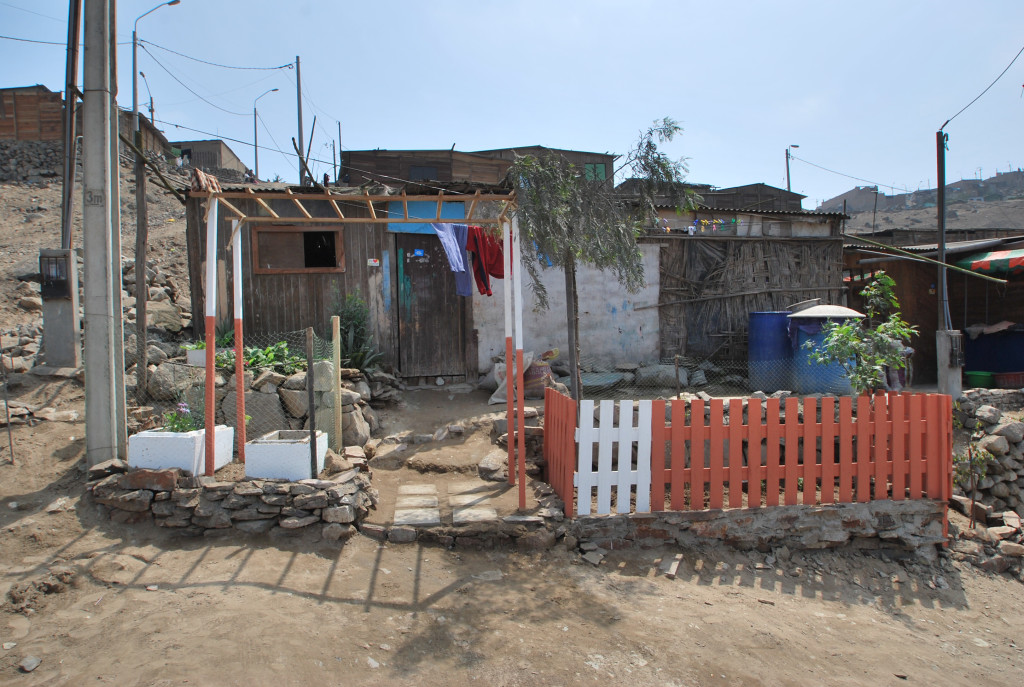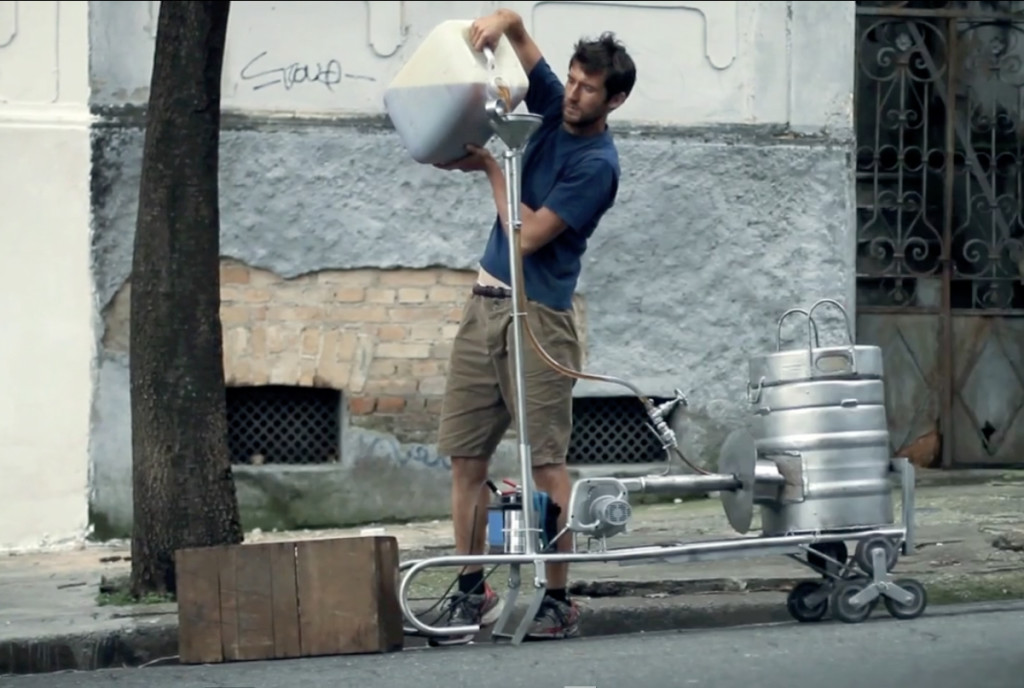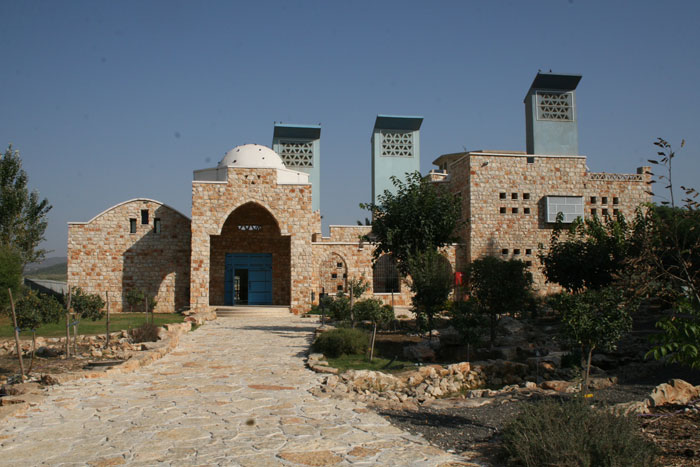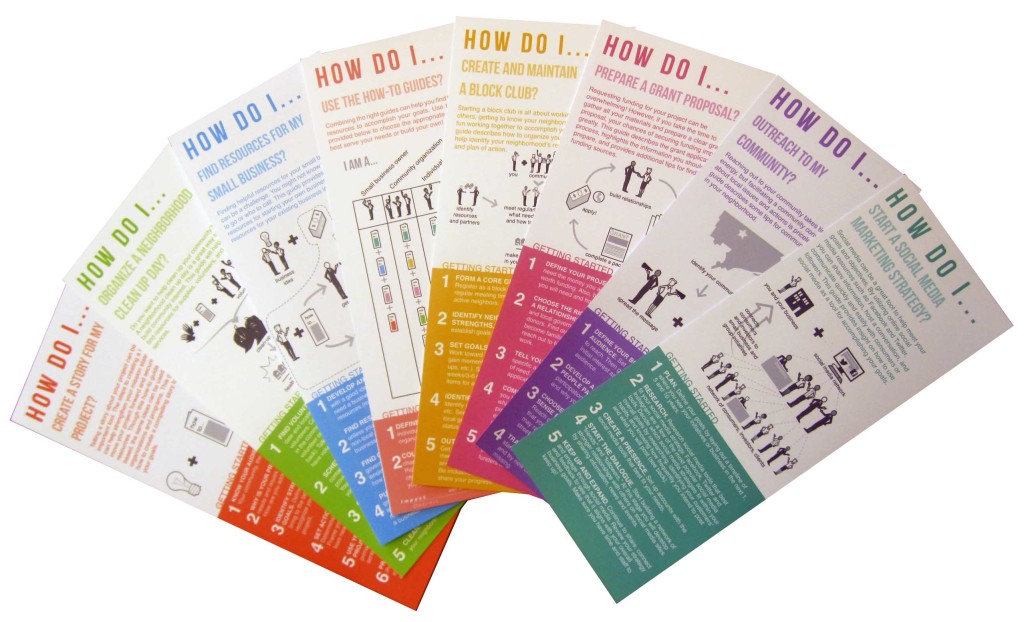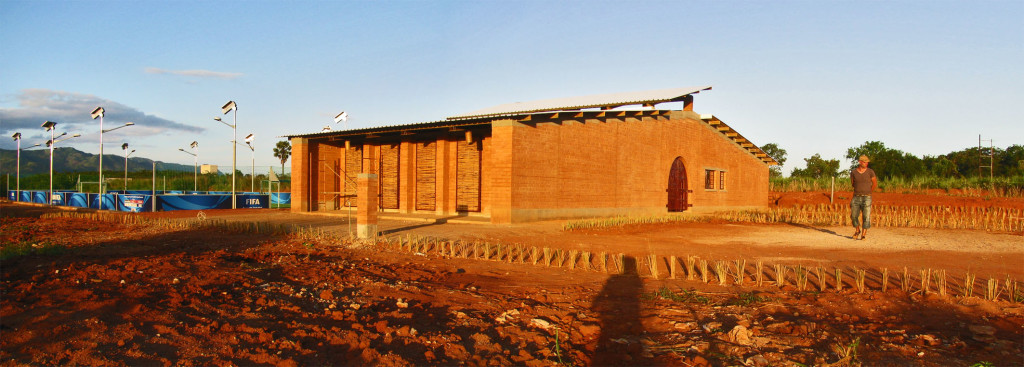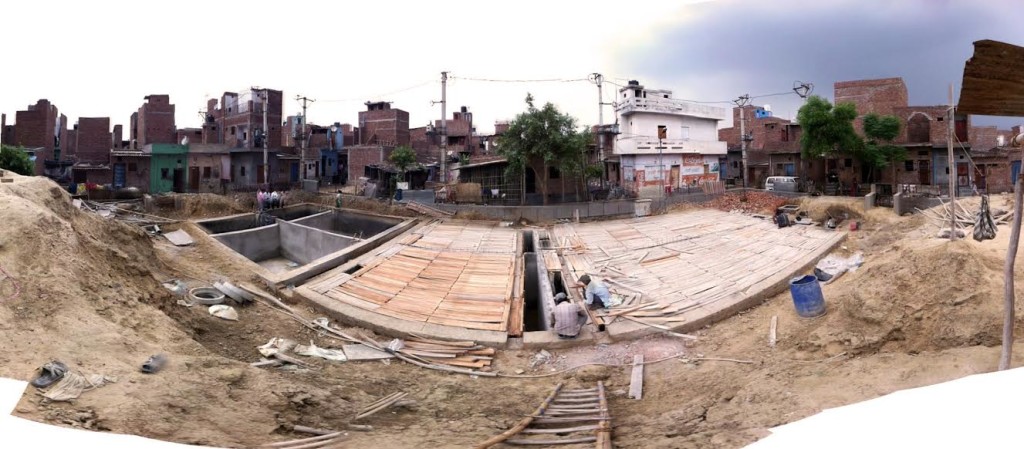2014 Award Winners
Comunidad Ecologica Saludable
Location: Puenta Piedra, Lima, Peru
Issues: Empowerment, Green Gardening, Health and Wellbeing, Food and Water Security, Access to Nature
Summary: Over 3 million people in Lima live in informal urban neighborhoods. Lomas de Zapallal is one such settlement in Northern Lima. It has a population of 27,000 and is divided into 19 neighborhoods. The Comunidad Ecologica Saludable (Healthy Ecological Community) program is providing residents of Eliseo Collazos with a thoroughly researched system to address multiple challenges of Empowerment, Green Gardening, Health and Wellbeing, Food and Water Security, Access to Nature. The project uses fog provides as a new water resource for drinking, household use and the irrigation of home gardens, community parks and reforestation. In the first phase, twenty-nine families will use this new source of water to create gardens for food as well as space to relax and socialize.
Team: Residents of the Eliseo Collazos neighborhood in Lomas de Zapallal, Lima Peru
Maximira (Marcia) Rodriguez, community leader of Eliseo Collazos; University of Washington Assistant Professor Ben Spencer, Dr. Susan Bolton; Dr. Joachim Voss, RN, ACRN; Jorge (Coco) Alarcon; Brooke Alford Leann Andrews; Shara Feld; Gayna Nakajo; Rekha Ravindran; Francisca Salazar; University of Washington students in the Design Activism Studio and Seminars
Website: http://sqwater.be.washington.edu/wp/
Jury Review: The project integrates a structured landscape with the local natural and social ecology by harvesting fog droplets in a desert. The critical resource produced from the fog, water, is channeled to a system of food gardens. The design focuses on food cultivation, community solidarity and is an effective collaboration that is both global and local, social and technical. The project is transformative for merging ecological science with local technology into a hybrid system that is suited to local operational capacity.
_______________________________________________________________________________________________________
Can City
Location: Sao Paulo, Brazil
Issues: Local Identity, Employment, Environmental Sustainability
Summary: Over 80% of recycling in Brazil is done by independent waste collectors called Catadores – the many waste collectors who pull carts by hand collecting waste materials to sell at scrap yards. Can City is a mobile aluminum foundry that melts cans collected on the streets of Sao Paulo to cast new products. The project has been initiated in the largest city in Brazil as a self-sustaining system that creates better employment and additional income for Catadores. The small foundry is fueled by used-cooking oil and the value-added products created can be sold on the streets and provide additional income for this low-income group.
Team: Alexander Groves, Designer; Azusa Murakami, Designer; Anya Teixeira, Production Assistant; Olivia Faria, PR and Community Organizer; Agatha Faria, Finance; Leonardo Giardini from Preserva Recicla, Collectors of Recyclables; Fabio Esteves; Edson and team from Foundry Metais; Juriaan Booij, Film Maker; Isso Ex, Catadore; Jejo Cornelsen, Artist; Paola Croso, Translator; Renata Padovan, Translator and Artist, Carlos Mancebo; Elcides, Catadore; Que Que, Catadore; Wilson, Catadore; Ricardo, Catadore; Alan, Catadore; Omar and Margareth Faria,; Richard Kovacs, assistant; Team from Heineken Brasil, Sponser; Team from Coletivo Amor de Madre, Project Production; Pedro Faria, Assistant; Fabio de Paula, Researcher
Website: http://studioswine.com/can-city
Jury Review: How can the discarded ordinary soda can be transformed through low technology to enhance an existing local economy, open new markets, and symbolize cultural artisanship? Developed by a young industrial designer, this structure is not a building but a modestly priced elegant portable street cart that uses old cooking oil to smelt cans into liquid metal poured into sand models to form craft objects reflective of Brazilian culture and environment. These can be sold to a growing tourist trade. The project encourages recycling, economic opportunity for poor to collect cans and participate – less than 20% of recycling in Brazil is done formally. One of best outcomes is capturing and recycling the cooking oil from street carts, which is otherwise very polluting.
_______________________________________________________________________________________________________
Towns Association for Environmental Quality Green Building Headquarters
Location: Sakhnin, Israel
Issues: Cultural Heritage, Local Identity, Job Training, Environmental Education, Green Energy
Summary: The Towns Association for Environmental Quality (TAEQ) Green Building, located in Sakhnin, is home to the first environmental organization to arise out of Israel’s minority Arab sector, which comprises 20% of the total population of the country. TAEQ is a municipal collaborative that organizes funds and resources from the six participating Arab municipalities for social, environmental, and economic development. Located in Israel’s northern Galilee region, TAEQ serves the populations of these towns, about 80,000 residents. Acting as a cultural meeting ground, the green building hosts 60,000 visitors to its campus annually, including women, farmers, the elderly, school groups, teachers, university students, scientific researchers, city planners, employees of local municipalities and visitors from abroad. Visitors participate in workshops and training courses related to ecology and sustainable development.
Team: Abed Yassem, Lead Architect; Riyad Dwairy, Architect; Hussein Tarabeih, PhD; Mayors of TAEQ’s municipalities: Sakhnin Municipality: Mustafa Abu Raya; Arrabe: Yasin Yasin; Dier Hanna: Samir Hussein; Eilaboun: Hana Sawed; Kaukab: Nawaaf Hjoje; Buine Najidat: Monir Hamudi; Dr. Shlomo Kimchie; Saleh Waked; Hanadi Higress; Said Khalaily; Bassem Ghanaim, Ali Osman
Jury Review: The building and landscape reflect traditional Arab design and cultural traditions, and house programs about sustainability, environmental responsibility, and water and energy conservation. Its beauty belies its true story, six Arabs communities located in Israel worked collaboratively to overcome discrimination, funding issues, differences between elders and youth, and a geopolitical conflict in the background to structure an organization and a place to collectively search for common ground through environmental initiatives.
_______________________________________________________________________________________________________
Community How-To-Guides
Location: Detroit, MI
Issues: Civic Engagement, Empowerment, Access to Services, Learning, Business Training
Summary: Impact Detroit has developed a series of Community How-to Guides for communities and organizations that highlight lessons learned and share helpful information for new projects and processes. These informational guides seek to build the capacity of local organizations providing access to information that can often be difficult to find. The guides explain city processes that allow for communities to take action, be empowered, and build broader community support.
Team: Impact Detroit and Detroit Collaborative Design: Ceara O’Leary, Virginia Stanard, Krista Wilson, Monica Chadha; Gaston Nash, College Core Block Club; Sam Butler, Community Development Advocates of Detroit; Michael Forsyth, Detroit Economic Growth Corporation; Sandra Yu, Detroiters Working for Environmental Justice; Lori Allen, Revolve Detroit; Rebecca Willis, Bleeding Heart Design
Website: http://www.dcdc-udm.org/community/impact/howto/
Jury Review: SEED Awards tend to feature the image of a group of smiling residents standing in front of a beautifully design community design and built building. The work afterward is less glamorous and difficult to capture in a photograph. It is design work that converts the values and lessons learned from demonstration projects, reframing existing public and private sector polices and procedures, identifying missing gaps in capacity, and translating to different cultures, for the community at large. With extensive community workshop experience, a network of community advocates and the design and building of spaces, this group has reflected about what these experiences can mean towards designing basic city building policies and procedures. A guide like this is a sign of hope that the Detroit communities are seeking tools that move a constant of crisis to the mode of daily productive rebuilding by minimizing the turbulence of existing agency procedures while aggregating individual efforts towards a common goal of defining a city wide inclusive set of rules of engagement.
_______________________________________________________________________________________________________
Manica Football for Hope Centre
Location: Bairro Vumba (Vumba neighborhood), Manica, Mozambique
Issues: Empowerment, Recreation/Play, Strengthening Community, Environmental Sustainability
Summary: Manica Football for Hope Centre is part of the “20 Centres for 2010” is the Official Campaign of the 2010 FIFA World Cup South Africa. The objective of the Football for Hope Movement is to establish a quality seal for sustainable social and human development programs working with football as the central tool in the areas of Health Promotion, Peace Building, Anti-Discrimination & Social Integration, Children’s Rights & Education and the Environment. Manica Football for Hope Centre involved the community in the design process and provided forty-nine jobs during construction. The design reflects the vernacular roots of the area and allows for all-weather use, natural air ventilation and is built with readily available. The center provides a football pitch, multi-purpose space, computer room, and classroom for health, wellness, and learning programs.
Team: Architecture for Humanity: Paulo Fernandes, Alina Jeronimo, Kevin Gannon, Mark Warren, Alix Ogilvie, Gretchen Mokry and Delphine Luboz; Jose Forjaz, Jose Forjaz Architects; Betar Estudos e Projectos: Sergio Martires, Engineer; GTO Engenheiros Consultores: Fernando Pimentel, Engineer; Martins Mariano, Engineer; Grupo Deportivo Manica: Shot Chikwandingwa; FIFA: Cornelia Genoni; Streefootballworld, and Ian Mills, 20 Centres for 2010; Greenfields: Franclin Ngwese; Yingli Solar: Ana Pardal, Yingli Green Energy Europe GmbH
Website: http://openarchitecturenetwork.org/projects/ffhmozambique
Jury Review: How can the game of soccer (football), the design of sustainable community built spaces, directed towards the desire to help the war in Mozambique catalyze large institutional change of existing corporate and philanthropic agent methods of working? FIFA and Architecture for Humanity have been on the ground working from their individual perspectives to serve the needs for structures of inclusion in Africa. Each met shortcomings in their individual projects until FIFA recognized that needed Architecture for Humanity’s design skills. Together they learned to open their projects to a wider community audience. Soccer then moved from being a game to a space for healing and community building. The spirit of the building program moved from being sustainable to becoming a place to spur the growth of inclusive social ecology.
____________________________________________________________________________________________________________
The Potty Project
Location: New Delhi, India
Issues: Women/Gender Safety, Sanitation, Affordable Housing, Access to Services, Affordable Housing,
Summary: In many informal settlements, a lack of sanitation is one of the major health problems. By applying an additive strategy, this project in a resettlement area of Savda Gherva significantly improves hygiene and strengthens social cohesion within the local community by involving the residents throughout the process. A pilot project commenced in 2012 to provide off-grid sanitation to more than 1,500 people. The issues addressed by the project also include safety for women, a problem increased by the current conditions.
Team: Julia King (Lead Architect), Dr. Renu Khosla (Team Leader), Sidharth Shanker Pandey (Programme Coordinator), Mr Zaidi Kumar (Chief Engineer), Maurice Mitchell (Academic Advisor) and the residents of Savda Ghevra ‘A’ Block resettlement colony
Website: http://www.holcimfoundation.org/Projects/decentralized-sanitation-system-near-new-delhi-india
Jury Review: The Potty Project sets the ground work for understanding that in a civil society the structures of inclusions need to be designed to define safe places for the daily life of each individual. As in Delhi and other cities, women live in fear for their lives or rape to use a community or public toilet due to the lack of sewage systems in slums. The Potty Project stands out as a statement about not waiting for government to act and resolve the issues of safety and sanitation in their community. The question is how this potty can be a catalyst for service upgrade. Inhabitants can effect small scale environments that remove sewage in reasonable way by introducing a system. This could be followed by a city as an i.e. of what could happen.
HONORABLE MENTIONS
_______________________________________________________________________________________________________
Project: Re: Dimen Kam Minority Cultural Heritage in China
Team: Marie Lee, Anastasya Uskov, Joanne Kwan, Dimen Dong Cultural Eco Museum/Western China Cultural Ecology Research Workshop, Dimen village, Liping county, Guizhou province, China. Workshop Director: Lee Wai Kit and Museum Director: Ren He-xin, Dimen village female elderly artisans: Wu Mei Tz (*1930), Wu Gai Tian (*1932), Wu Ying Niang (*1941), Wu Hua Zhuan (*1941), and Wu Meng Xi (*1950) and Jennifer Little, Associate Professor of Photography Department of Visual Arts, University of the Pacific
Website: http://marieannalee.com/redimen/
_______________________________________________________________________________________________________
Project: Walk [Your City]
Team: Matt Tomasulo, Director, Walk [Your City], Mitchell Silver, Chief Planning and Development Director – Raleigh NC (Advisor to project); Jeff Speck, AICP, Author of Walkable City and Planner (Advisor to project)
Website: http://walkyourcity.org/
_______________________________________________________________________________________________________
Project: People Organizing Place
Team: bcWORKSHOP Project Team: Brent Brown, Melanie Wood, Emily Schmidt, Lauren Powers, Katharine Dike, Craig Weflen, Leslie Nepveux, Thomas Simpson, Maria Bergh, Diana Kichler, Jennifer Dowland, National Endowment for the Arts
Website: www.bcworkshop.org/bcW/category/neighborhood-stories-2/
View 2013 Award winners here.
